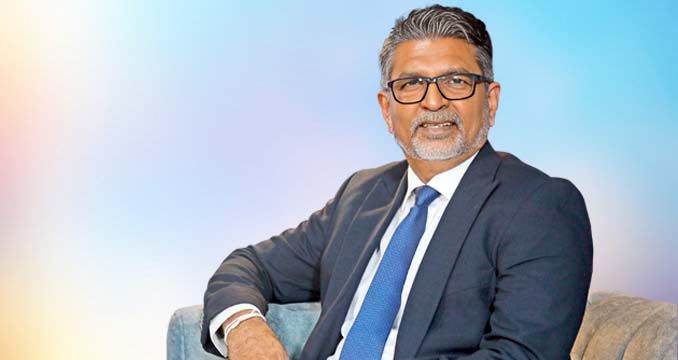With over two decades of experience in the IT domain, Mr Buddhikka Seelanatha, Chief Information Officer at Bank of Ceylon, Sri Lanka has become a vital force in driving digital transformation within the banking sector. Known for his strategic alignment of vision, strategy, and execution, he has enabled banks to streamline their digital agendas, enhancing operational efficiency through robust technology governance and solution delivery. His expertise spans an impressive range of skills, from IT budgeting and application development to complex project management, with a specialisation in Microsoft .NET technologies, Oracle solutions, and data warehousing.
Buddhikka Seelanatha’s hands-on experience managing and delivering the multifaceted Digital Banking Project has further solidified his reputation. This project includes seven critical modules, such as Express Banking, Retail and Corporate Internet and Mobile Banking, and Loan Origination Systems, all designed to provide innovative and cost-effective solutions to customers. A pioneer at Nations Trust Bank, he established the Application Development Division, fostering high team morale and retaining top talent in a demanding industry. His positive, solutions-oriented approach has garnered consistently positive feedback across numerous business divisions, exemplifying his leadership and dedication to advancing digital banking in Sri Lanka.
Recently, Global CEO Magazine (GCEO) had the pleasure of meeting with Buddhikka Seelanatha (BS).
GCEO: In this fast-evolving technological landscape, what solutions have you implemented within your bank, and how have these supported your organisation through disruptive times?
BS: Well, it’s a twofold approach. Firstly, we are providing digital services to our end-user customers through multiple channels, such as internet banking and mobile banking. Our customers can access these services as per their convenience.
Additionally, we have taken steps to automate our internal functions, enhancing efficiency within the organisation. We use leading work flow solutions to optimise workloads, reduce turnaround times, and streamline the customer journey, making it as seamless as possible. This approach benefits both our customers and our internal teams.
Moreover, we have introduced remote working capabilities for our IT staff, allowing them to work from anywhere. We also leverage customer analytics to gain insights into their needs and behaviours, enabling us to maintain system availability and respond effectively during disruptive events.
GCEO: You’ve highlighted various technological transformations aimed at improving operational efficiency. Could you tell us about one such initiative and how it has contributed to the overall efficiency of your organisation?
BS: Certainly. Currently, we are in the process of revamping some of our legacy systems, some of which were introduced over seven years ago. Technology has changed significantly since then, and customer needs have evolved, especially with the increase in transaction volumes following the COVID-19 pandemic. Today, more customers are using digital channels for their daily transactions without needing to visit a branch, primarily through mobile and internet banking.
We are upgrading these systems to provide a better user interface, allowing customers to complete transactions seamlessly and efficiently. This re-engineering process is key to enhancing our service quality.
GCEO: Technology is essential, but effective leadership is equally crucial. What leadership qualities do you believe are needed to guide your organisation through technological disruptions and support your IT team’s efforts?
BS: Leadership, I believe, centres around three pillars: people, processes, and technology. It’s about selecting the right people for the right tasks and aligning processes with the appropriate technology. As technology rapidly evolves, leadership must foster adaptability. For instance, artificial intelligence (AI) is increasingly relevant to financial services, and we see potential to use it to enhance customer service.
In the future, AI could be a powerful asset in our call centres, allowing us to respond to customer queries quickly and efficiently. This area has significant potential for us, and we are actively researching and developing solutions to integrate AI-driven customer interactions.
Today’s financial landscape is also changing with the advent of Fintech. As a traditional bank, we must evolve to compete with these new entrants. Adopting Fintech- like agility while balancing the needs of diverse customer segments is a challenge, but it’s one we are embracing.
GCEO: Lastly, looking ahead to the next five years, how do you foresee the future of the financial and technology sectors in Sri Lanka, and what role do you believe Bank of Ceylon will play?
BS: Sri Lanka’s mobile penetration is quite high, and mobile banking will be essential as more customers adopt digital solutions. Over the next five years, AI and mobile technologies will significantly impact our sector, helping to reduce operational costs and enhance customer experience.
AI will assist in many areas, from fraud detection to customer on boarding. We aim to leverage AI to support 24/7 customer service, reducing dependency on human resources and ensuring round-the-clock availability without fatigue.
In essence, our goal is to provide the best service possible. Whether in branches, ATMs, or digital channels, we strive to meet customer needs. This is critical for our retail and corporate customers alike as we enable them to complete their daily transactions seamlessly.
GCEO: Thank you, Mr Buddhikka Seelanatha, for these insights. We look forward to seeing how Bank of Ceylon continues to lead in the ever-evolving financial landscape of Sri Lanka.


